For years the Boykin Spaniel, or just Boykin for short, has been a well-kept secret of the American South. His intelligence, hunting prowess, and love of family made him a prized dog of the select few who knew of him. But now that the word is out this breed has become a popular hunting and family dog for many people. These gregarious and lovable dogs make wonderful companions for those wanting an active and friendly dog. Read on to learn more about the Boykin Spaniel.
Description of the Boykin Spaniel
The Boykin Spaniel is a medium sized spaniel that falls between the Cocker Spaniel and Springer Spaniel in terms of size. They are strong and tough, but without being large or overbearing. Their well-muscled and compact bodies give them a great edge in the field, and their webbed toes contribute to their amazing water abilities.
This breed has many of the amazing qualities that befit most spaniels. He has a sturdy and compact body that is great at stealthily moving through the field, long soft ears that hang low by his face, and an ever-wagging tail that shows the affectionate and happy nature that is so common of spaniels.
Breeder White Boykin, in South Carolina, put in the time and effort to breed and train this dog into the excellent hunter and family companion that he is today.
The outer coat of this breed is medium length, and the undercoat is thick and short. This double coat helps protect the dog when he is in the water. One of their signature attributes is the rich brown color of their coat, ranging from dark liver to chocolate.
Life Expectancy and Size
The Boykin Spaniel is a generally hardy dog that lives an average of 10 – 15 years. Their active lifestyle may contribute to a healthy life, but it is important to always work with a reputable breeder to get the healthiest puppy possible.
A nice in-between sized spaniel, the male Boykin stands 15.5 – 18 inches tall and weighs 30 – 40 pounds; and the female stands 14 – 16.5 inches tall and weighs 25 – 35 pounds.
Protective Ability
The Boykin Spaniel is alert and focused, but like many of his cousins is too friendly to be a good guard dog. They can make decent watchdogs, but count on your Boykin for his outgoing personality more than his ability to protect.
Training
Eager to learn and always happy to work with his owners, the Boykin Spaniel is often quite easy to train. Their energy and enthusiasm are easy to channel into training.
Positive training methods are the best way forward with his breed. The Boykin Spaniel responds very well to rewards-based training so be sure to incorporate things like treats and games into your training sessions.
Early socialization is also a great way to help your Boykin Spaniel grow into an outgoing and well-mannered pup. Exposing them to many situations early will make sure they are never timid or shy.
Energy Level
The Boykin is one of the most active and energetic spaniels around. While they are gentle at home, they still need plenty of exercise to stay happy and healthy. Hunting, games, and long walks are all important ways to keep them busy and mentally stimulated.
The Boykin Spaniel loves to snuggle and is a very affectionate dog at home. However, their high energy means they will require plenty of exercise before they are ready to snuggle. Be sure you can commit to giving them enough physical activity every day before getting one of these fun and confident dogs.
What Living with a Boykin Spaniel is Like
This is an all-around kind breed.
The Boykin Spaniel equally loves being a part of the family at home, and being a part of the hunt outside. They make excellent companions for children and do well with other dogs. But as soon as they are in the field they transform into focused machines ready to get the job done.
While they may seem like great companions for more sedentary families, they Boykin Spaniel needs plenty of exercise and won’t be content lazing around all day. They are generally cuddly and calm at home, but they require lots of activity despite seeming like the perfect lazy day companion.
Care of the Boykin Spaniel
The Boykin Spaniel is happy so long as he gets plenty of exercise, room to move around, and a loving family.
Environmental Needs
Bred in South Carolina, the Boykin Spaniel is no stranger to heat and humidity. They do well when the sun is blazing, but can also adapt to cooler temps. Just be careful of exposing your dog to extreme temperatures. Their tendency to work until they drop makes them prone to overheating.
Exercise Needs
This active breed is a real charmer and loves to spend time with his family, and his favorite way to do that is through games and exercise. They need plenty of daily exercise so this breed is better suited to those with an active lifestyle.
Multiple long daily walks, backyard playtime, and canine sports are all great ways to work out your dog’s energy. Hunting is also a great choice for this breed as this is what they were meant to do.
Shedding and Grooming
The medium length coat of the Boykin Spaniel is not as high maintenance as it may look. A weekly brushing is often enough to keep this dog’s coat healthy and clean.
This breed sheds moderately.
Regularly check and clean your dog’s long ears as they have a tendency to become dirty and infected, and keep his nails trimmed.
Ideal Home Environment
These dogs are very popular with families and hunters alike. Their prowess in the field and ability to transition to gentle and doting family dogs makes them a great choice for almost anyone. They do well with children and other dogs. They thrive with those who lead an active lifestyle, as their endless energy means they are always up for an adventure.
But it is important to know that the Boykin Spaniel can have health problems that may be costly to deal with.
Health Concerns
Working with a reputable breeder who screens for potential genetic conditions like hip dysplasia, juvenile cataracts, and exercise-induced collapse is important to ensuring you have a healthy puppy. But be prepared, as your Boykin Spaniel can become sick at any moment.
Behavior Problems
Natural hunters, the Boykin Spaniel is an avid chaser and will be quick to run after prey. Training him as a hunting dog early and keeping him fenced in or on leash will help keep him from wandering off.


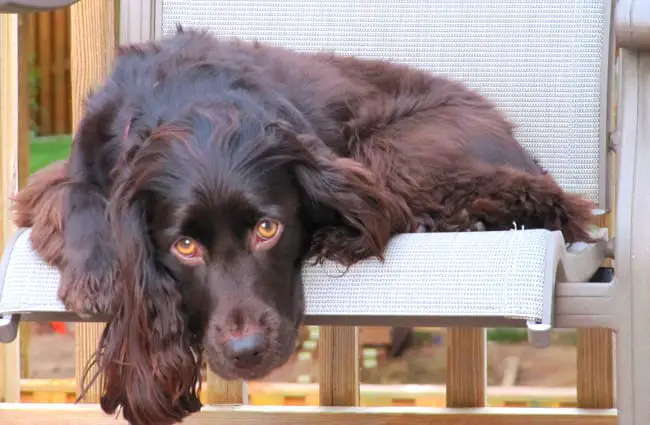
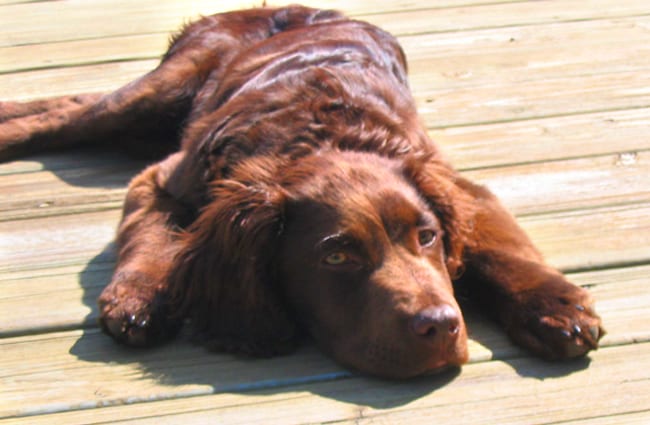
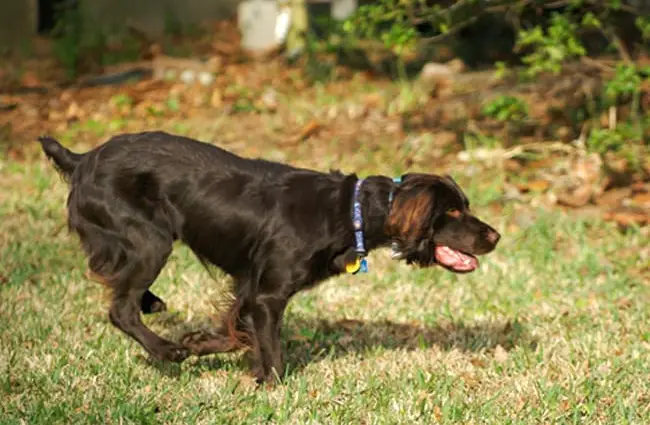
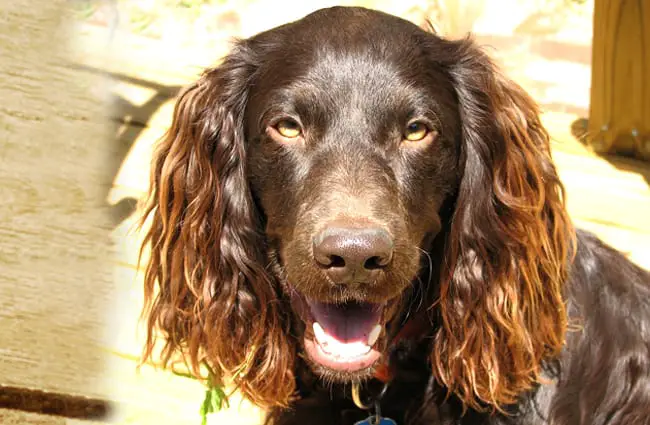
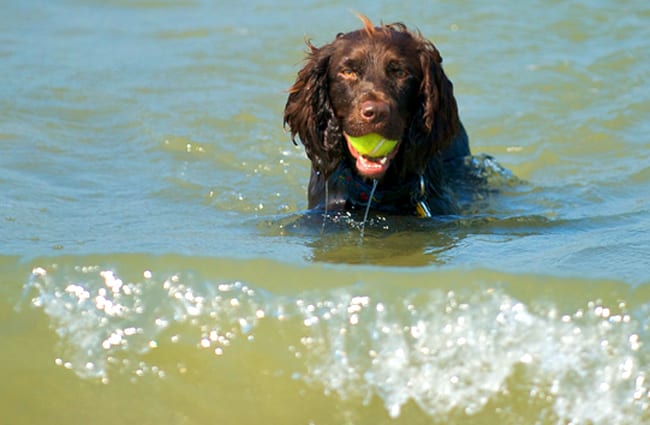
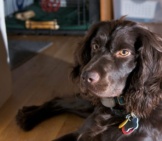
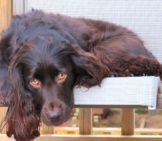
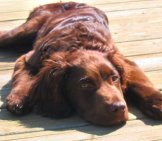
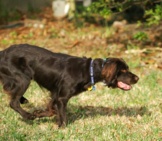
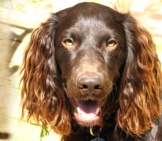
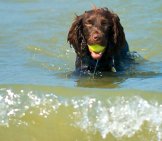





![Red Angus Closeup of a beautiful Red Angus cowPhoto by: U.S. Department of Agriculture [pubic domain]https://creativecommons.org/licenses/by/2.0/](https://animals.net/wp-content/uploads/2020/03/Red-Angus-4-100x75.jpg)

